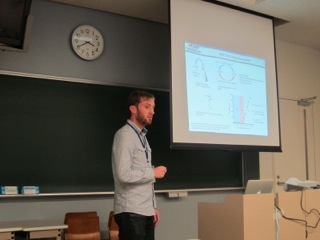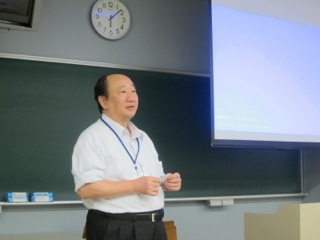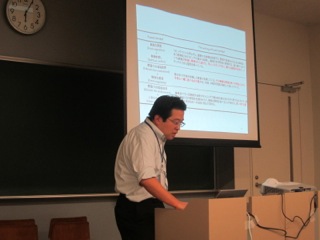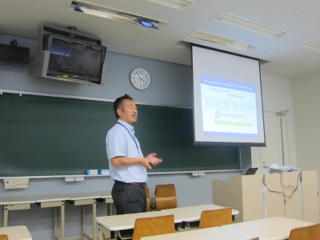【2014. 8. 24-30】IUMRS-ICA 2014 活動報告
2014年08月30日
日時:2014. 8. 24-30
場所:福岡県
Conference Report: IUMRS-ICA
AIST Dr. Gary Dunderdale
Dr. Atsushi Hozumi
I attended the IUMRS-ICA Fukuoka conference between August 24th and 30th. The session was Materials Technology inspired by Natural Phenomena and Natural Materials. An oral presentation was given titled “Green Synthesis of Stimulus-Responsive Superoleophobic Polymer Brushes and Their Applications in Oil/Water Separation and Water Purification” lasting for 15 minutes with 5 minutes of questions at the end from the audience. The presentation concentrated on our past results of generating surfaces on which oil drops can easily slide based on water soluble polymer brushes. This work has recently been published in the journal ACS Applied Materials and Interfaces. Results on how this oil repellency can be switched on or off via external stimuli such as pH value, salt concentration, or temperature was also presented for the first time. New research based on water repellent polymer brushes submerged in oils was also communicated. The presentation was well received and several questions were asked raising some interesting discussion points. One questioner wanted to know about the polydispersity of the prepared polymers which are attached to the substrates surface. It was explained that polydispersity of our polymer is not key to generating the oil repellent behavior, and that polydispersity is simply a number rather than a measurable property. Further we explained that key aim of our research is to generate surfaces from which oil is strongly repelled, rather than study the mechanism. Another question focused on one of the unexpected findings in the stimuli-responsive nature of the polymer brush surfaces. The questioner wanted more information of the results and a reason for the unexpected result. This information was given, and a theory proposed why this unexpected result was obtained but stressed that currently we do not know the exact reason. This will be the subject of future experiments and research.
I also attended several other presentations in the same session concerned with similar research topics. Prof. Shimomura gave a particularly interesting presentation (Biomimetic water transportation device based on wharf roach Ligia exotica) of how water is transported up the legs of a small insect (Wharf Roach Ligia Exotica), and researchers from Nagoya Institute of Technology gave a similar talk also on water transport of surfaces similar to those of insects (Water and oil transport with open capillary channels mimicking animal). These presentations gave me several ideas for new research directions we could follow in our future work and design principles which we could use for current research.
Other research presentations were unconnected with our research theme but were interesting and could be useful in the future perhaps. For example researchers from Nagoya Institute of Technology gave a presentation on how small insects can be seen through an electron microscope by firstly coating the insect with a nanosuit consisting of a polymerized surfactant complex (Analysis of inner structures of biomimetic thin-film “Nanosuits”).
Overall the conference was a well-hosted event at a suitable location in Fukuoka. Conference chairs kept strictly to the allocated schedule leading to fluid running of the presentations.





